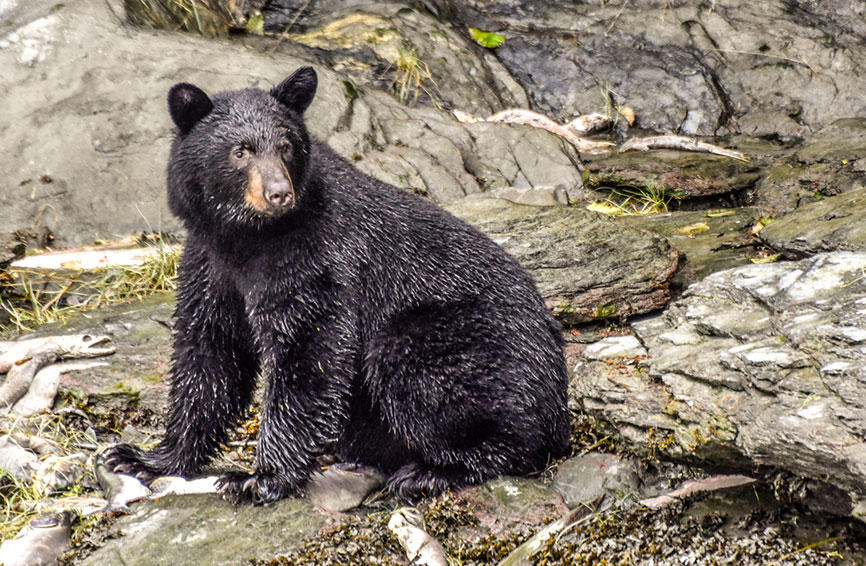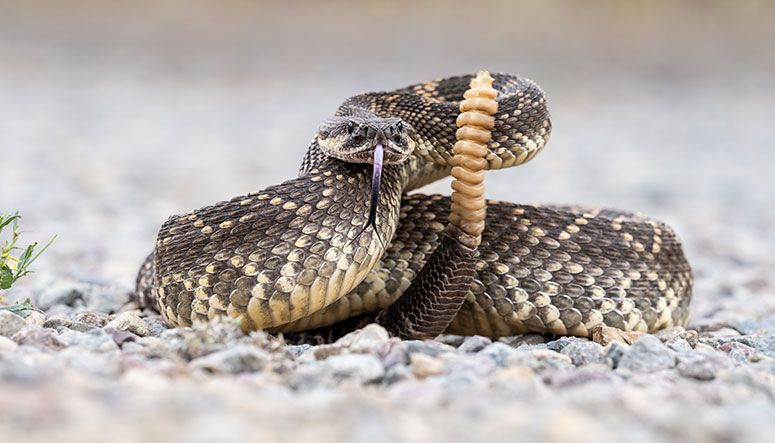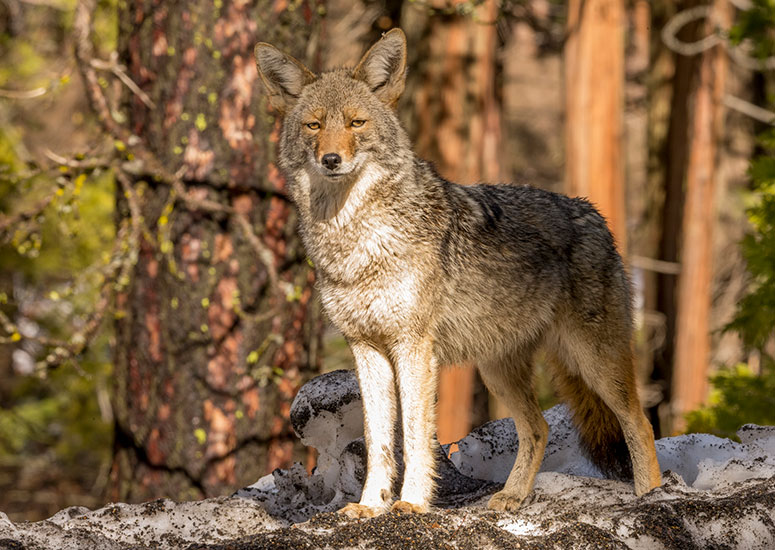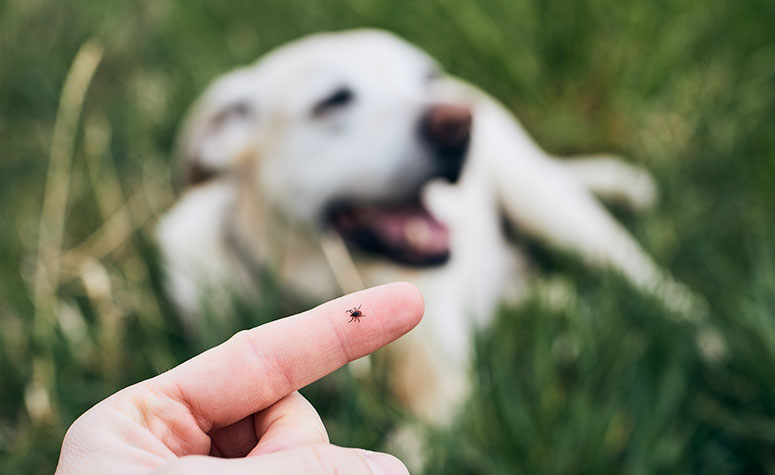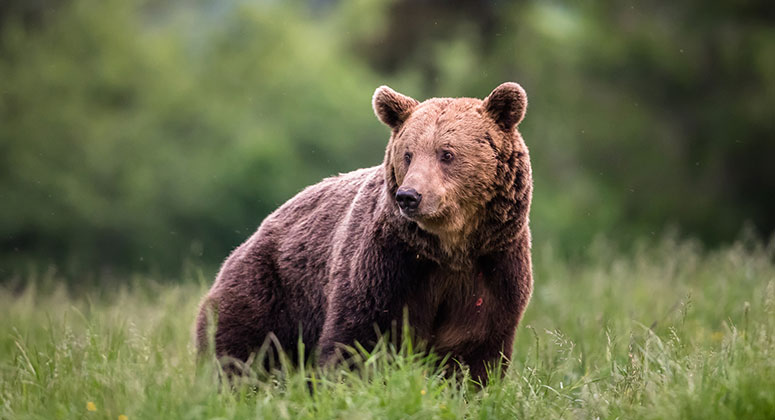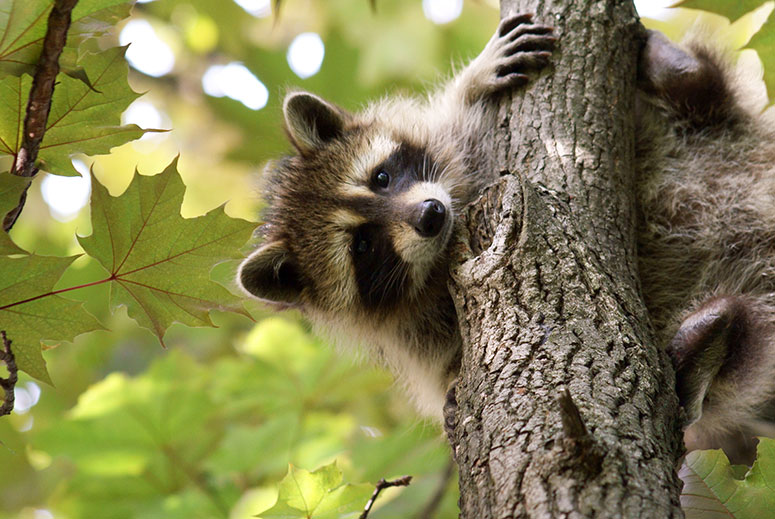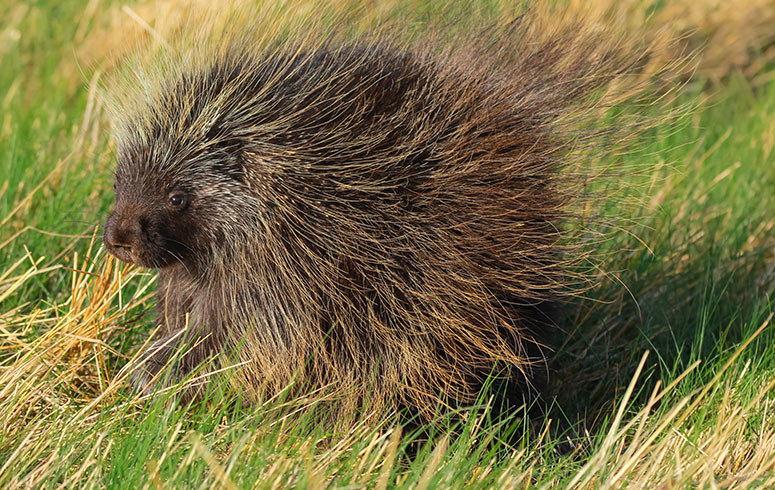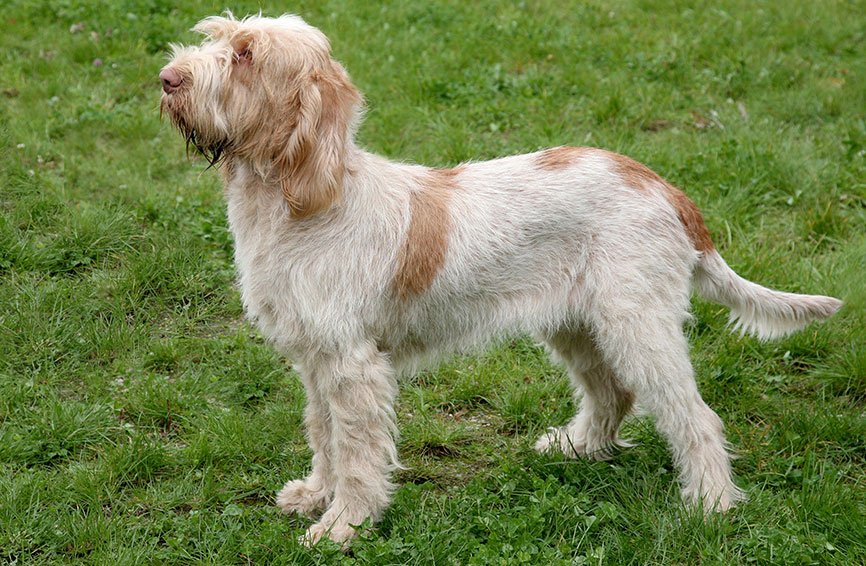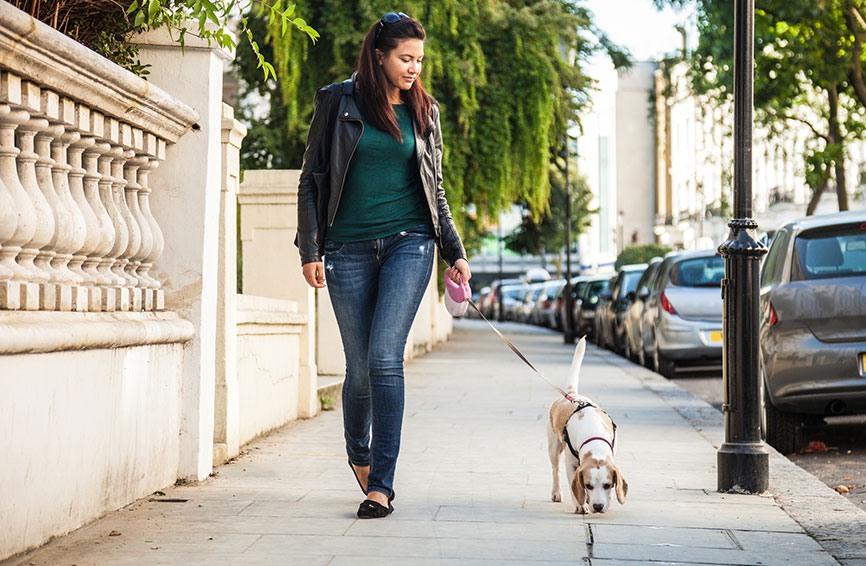Key Takeaways
- Several wild animals can pose a danger to dogs and cats.
- Pet parents should familiarize themselves with the types of wildlife in areas where they live and travel, and what to do if they encounter them.
- It’s best to avoid conflicts by making noise to alert wildlife, keeping dogs on leashes, and clearing the property of food and garbage.
Table of Contents
While the great outdoors offers an enriching environment for pets to explore, it also poses potential dangers in the form of wildlife encounters. Pet parents must be aware of these risks and know how to navigate them to keep their pets safe.
Where you live or travel is a key factor in knowing what wildlife might pose a risk to your pet. For example, rattlesnakes are common in the Southwest but not in cooler climates. Mountainous, wooded areas will have bears, while people living in the desert don’t need to worry about that. If in doubt, check with your local fish and wildlife officials or veterinarian to know what to watch for.
Common dangerous wildlife
1. Snakes
In several regions, venomous snakes pose a significant risk to pets exploring outdoors. Dogs get bitten when they sniff around and a snake feels threatened. Symptoms, which may not appear for several hours, include sudden weakness, swelling, trembling, diarrhea, and vomiting. WebMD warns that snake bites can be fatal if not treated promptly, but 80 percent of dogs will survive with treatment. Treatment includes antivenom, antibiotics, and pain medication. Learn about the harrowing journey one Healthy Paws customer went on when her dog was bitten by a rattlesnake while on a hike and racked up a $11,735 vet bill.
2. Coyotes
Coyotes are widespread across North America and can see pets as prey or threats. While not common, there have been incidents of coyotes attacking pets, especially cats. If you spot a coyote in your neighborhood, don’t panic, says the Humane Society. Most coyotes avoid people unless they have been fed or become habituated to humans. Their main diet consists of rodents, but they also eat fruit and birdseed. They may attack cats or small dogs as food or attack larger dogs if they are defending their territory, especially during breeding season. You can protect your pets by keeping and feeding them inside unless supervised. You can reduce coyotes’ interest in going near your home by keeping trash secured, poop picked up and all food inside. If they approach, “haze” them by throwing things and making noise until they leave. Learn more tips about keeping predators at bay.
3. Ticks
Though tiny, ticks are dangerous parasites that can transmit diseases such as Lyme disease and Rocky Mountain spotted fever to both pets and humans. Ticks can attach to your dog when they go on walks, hikes, or during any outdoor activities. Here is a map showing where ticks are most concentrated in the U.S. The best way to prevent ticks from attaching to your dog is by the regular use of tick control products. Your veterinarian can advise you about the best product for your dog and your situation. You should also examine your dog closely after being outside for ticks in their fur and remove them. Symptoms of Lyme disease include pain, lameness, loss of appetite, joint swelling and fever. Antibiotics are used to kill the bacteria that cause Lyme disease, and treatment can take some time. Pet insurance helps mitigate the high cost of treatment – one pet parent incurred about $7,000 in vet bills but was reimbursed for most of it.
4. Bears
In areas where bears are present, it’s crucial to keep pets on a leash and make noise while trekking to avoid surprising them. Generally, bears are shy and will avoid people and pets. Attacks on dogs are rare, but have happened. However, if you surprise a bear, or get between a mother and a cub, they may act aggressively. Also, if your dog is off leash and runs, the bear may think it’s prey and give chase. If you are hiking in bear country, carry bear spray and know how to use it. You may also consider wearing a bear bell or putting one on your dog to avoid surprising bears. If you are backpacking or camping overnight, follow local regulations on storing food safely away from bears, who can smell food from miles away.
If you do see a bear and it does not run off immediately, follow these tips from Orvis, an outdoor gear company:
- If the bear has not seen you, leave quietly without attracting attention. If you run, you may encourage the bear to run after you. So, slowly turn and walk away with your dog.
- If the bear has spotted you, give them some space. Keep your dog close to you and calmly return the way you came. If necessary, take a detour to give the bear as much space as possible.
- If you are at close range and an encounter is unavoidable, make yourself look as big as possible. Then, make lots of noise to scare the bear away. Do not make eye contact as the bear may mistake this for aggression. Back away from the bear, making sure that they have an escape route as well.
5. Birds of prey
Birds of prey—eagles, hawks, and owls—are all large enough to pose a risk to small dogs and cats. If your dog is small—say, 5 to 20 pounds, or cats of similar size—these birds can easily swoop in and pick them up, just as they do with rabbits, ducks and other wild prey. Keep small pets inside when not supervised and close to you when out. According to the Wildest, Great Horned Owls are the most likely to attack a dog, followed by Northern Goshawks. If you want to allow your small pet to roam outside, Wildest suggests a fenced and covered enclosure.
6. Raccoons
Raccoons, which are common in most parts of the country, are naturally shy animals that prefer to retreat when they sense humans or pets nearby, according to crittercontrol.com. However, fear can dwindle if they adapt more to a human environment. When cornered or protecting their young, they can be dangerous to people and pets and have killed small dogs and cats, critter control says. They are also a common species for carrying rabies, so any bite could be deadly.
Less common but dangerous wildlife
- Moose are majestic creatures but can be dangerous to people and pets. They can weigh up to 1,540 pounds and are found in 19 states, with most residing in Alaska. According to Colorado Parks and Wildlife, moose see dogs as predators and will attack aggressively, charging with no warning. Do not surprise a moose; if you see one, move away quickly with your dog on a leash. If they charge, get behind a large tree, rock, or other object.
- Porcupines will not usually attack pets, but if a curious pup gets too close, they will defend themselves or young with their hooked quills, according to VCA animal hospitals. If the quills puncture the skin, they will move through muscle, ultimately penetrating body cavities and internal organs. Because the quills carry bacteria with them, once they penetrate the skin they can act as a source of infection and cause abscesses, so it’s important to get to a vet as soon as possible.
- Skunks are naturally docile animals and rarely take the offensive, VCA animal hospitals say. However, if a skunk becomes alarmed or another animal or person threatens them, they use a stinky spray as a defensive weapon. Seek immediate veterinary treatment if your dog gets sprayed directly in the eyes or mouth. If not, you may be able to mitigate the smell with a commercial odor remover or homemade solution with hydrogen peroxide, baking soda, and dish detergent. Also, be aware that skunks are carriers of rabies, so if the animal is acting strange or biting, report it immediately to the local wildlife agency.
- There are several species of toads that can be toxic to pets, including the Colorado River, giant, common and American toad. These amphibians secrete bufotoxin, a powerful hallucinogen that dogs ingest when licking the toad’s back. If you spot your dog or cat chewing on a toad, immediately rinse out their mouth. If there are signs of poisoning such as foaming at the mouth, dark pink or red gums, and eye or nose irritation, contact your veterinarian. As the toxin advances, seizures, paralysis, and difficulty breathing can occur.
Preventative measures and safety tips
1. Knowledge is vital: Familiarize yourself with the types of wildlife you might encounter in your area or during your travels. Understanding the habits and dangers of these animals can help you avoid risky encounters.
2. Leash your dog: Always keep your pet on a leash in areas where you might encounter dangerous wildlife. A leash prevents your pet from chasing after wildlife and makes it easier for you to retreat from a potential threat quickly.
3. Vaccinations and preventative care: Ensure your pets are up-to-date on their vaccinations and have protection against parasites like ticks and fleas. Regular check-ups can help detect any health issues early.
4. Training: Training your pet to respond to commands can be lifesaving in a wildlife encounter. Commands like “come,” “stay,” or “leave it” can prevent your pet from engaging with dangerous animals.
5. Nighttime precautions: Limit outdoor activities during dawn, dusk, or nighttime when many predators are most active. If you must go out, carry a flashlight and make plenty of noise to alert wildlife of your presence.
6. Clean up food and waste: Remember not to lead a predator to your pet by leaving their food, or any food, outside. Besides attracting predators, it can attract mice and other critters that predators like to hunt. Also, secure any garbage, especially if you live in an area with bears or raccoons. Anything with a scent can attract predators.
In case of an encounter
If you find yourself and your pet in a wildlife encounter, stay calm. Attempt to slowly and quietly retreat while keeping your pet close. In case of a wildlife attack, seek veterinary care immediately, even if the injuries seem minor, as there may be a risk of infection or other complications.
Conclusion
Exploring nature with pets can be a delightful experience if done safely. By understanding the potential dangers and taking necessary precautions, pet parents can mitigate the risks of dangerous wildlife encounters. By purchasing pet insurance, pet parents can ensure their pets can get the care they need should they tangle with a dangerous animal.
